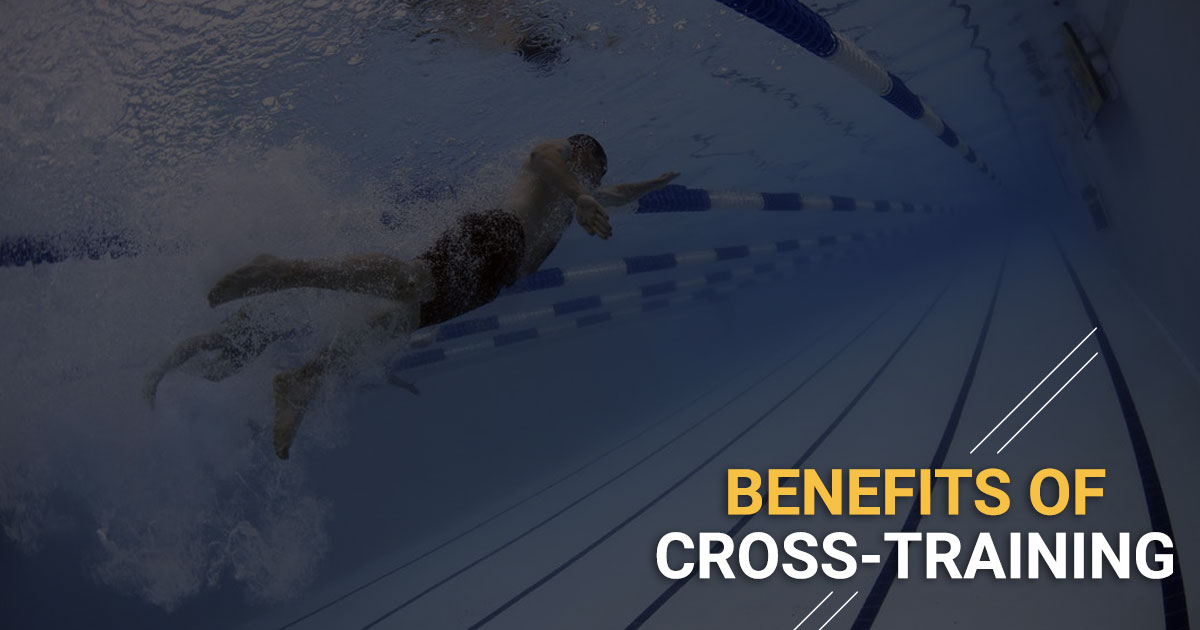
Cross-training isn’t usually a runner’s favourite pastime. If you’re one of the few who actually enjoys doing activities other than running, you’re in luck. Cross-training is an excellent tool to add into your weekly training schedule.
So why does cross-training have such a bad reputation? Typically, it’s because these activities are associated with injury. When a runner is taken out of the game and forced to rest, or do another form of exercise other than running, they’re usually not very happy about it. Thus, they aren’t excited to be on the bike, in the pool, or in the gym. This mindset needs to change.
Cross-training provides so many benefits: increased muscle strength & flexibility, reduced risk of injury, recovery promotion, and can potentially prolong your running career. Here are the top reasons to add any form of cross-training into the mix:
- Injury Prevention:
Running is a very repetitive sport that puts stress on the same muscles and joints every step you take. Pounding the pavement is not easy on your body, and after too many miles, your body will remind you of that by breaking down in some way. Overuse injuries occur from a variety of factors including muscle imbalances, muscle weakness, inadequate recovery, and irregular biomechanics. Cross-training helps by: reducing the amount of impact subjected on your body; strengthening non-running muscles; and increasing overall cardiovascular fitness through different means. - Active recovery:
Running can wreak havoc on your body, especially if you’re doing a lot of mileage. The continuous pounding of the pavement is required to some extent to prepare your body for longer road races, but can definitely leave you feeling pretty beat up after long days on the road. While full rest days are essential throughout training, a lot can be gained from taking a day off of running to do an easy cardio day somewhere else. Switching out an easy run for a bike ride, a swim, or pool run can help to flush out your muscles, promote blood flow to working muscles and actually aid your recovery. - Enhances performance:
Participating in activities that utilize muscles other than the ones you use while running, will benefit your running performance. Things like yoga, pilates, swimming, and gym work can help to strengthen your upper body and core which is essential to maintain good running posture. We’ve all seen people at the end of a race when they’re fatigued and they’re hunched over, have limited knee drive, and their neck jutting forward/backwards. This can happen due to poor pelvic stability, weak core/upper body muscles, and any other instabilities. If these areas are strong, you’ll expend less energy trying to stay upright, and instead use that to translate into finishing kick leg power. - Keeps the motivation up:
Taking a day off from running isn’t going to make your fitness disappear. Instead, it could increase your motivation for your next run. Human tendency is to stray from anything that is too monotonous. No matter how much you adore something, if it’s the only thing you do every single day, there are times when it starts to wear on you. Throw in a spin class, or a swim, or even a day on the mountains (weather dependent of course), and give your body a break from the daily grind. You’ll come back to your next run workout feeling fresh and ready to get back into what you love doing. - Greater running fitness:
Trying new race distances keeps things fun, but when you return to a race you’ve done before it’s in our nature to want to be better, and ultimately faster than we were before. Cross training can help achieve this. Your running can be enhanced through other activities as they will help your efficiency, power, and ability to consistently train without excessive cumulative fatigue or injury. Not only will cross training will work on your cardiovascular fitness and muscular strength without the same impact as running, it will speed up recovery so that you’re able to push harder and get more bang for your buck in each running workout. - Rehabilitation:
Whether it’s a full-blown injury, or just a little niggle, cross training can help you get back into the game. Sometimes when a more serious injury occurs, in order to stay in shape you have to modify your schedule to accommodate cross training variations of your running workouts. Activities such as water running, elliptical training, and cycling are the best for mimicking the muscles used in running. They are leg dominant alternatives that compliment your running and keep your cardio levels up. Even if you don’t gain fitness while rehabilitating, you can certainly maintain a solid base that will make your return to running much smoother.






